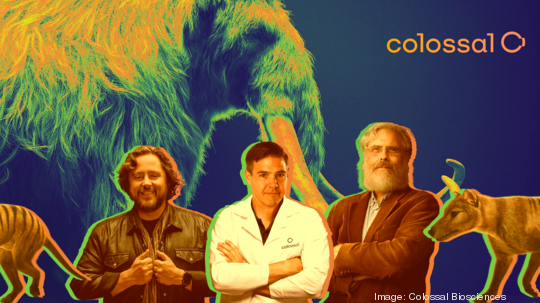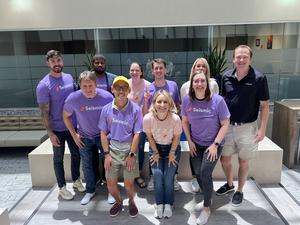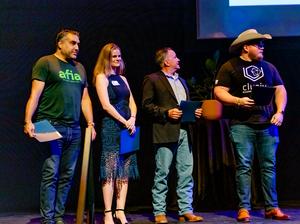
If you ask Ben Lamm whether using advanced genetic engineering to bring the Tasmanian tiger back from extinction is playing god or disrupting nature, he'll tell you we humans have been, in effect, doing that for centuries.
It was humans that drove the Tasmanian tiger, also known as the thylacine, to extinction in the first place, even placing a bounty on them.
"There's nothing more natural than to be appreciative and protect what we have," he said. "We can use advanced technologies that can not only protect species, but also undo what man did, like in the case of the thylacine."
His new colleague, Andrew Pask, who has partnered with the University of Melbourne and its Thylacine Integrated Genetic Restoration Research Lab, agreed.
"We played god when we exterminated them. We play god when we chop down the rain forest. We play god when we invent modern medicine," he said. "It's like, where do we want to draw the line? At least with this, we try to restore something that we destroyed. So I would think this is the good god part that we're doing. If we're playing god, at least we're playing good god."
Lamm, co-founder of Colossal Biosciences Inc., is staking the future of his startup on the de-extinction of two animals: The woolly mammoth, which the company announced as it came out of stealth mode nearly a year ago, and, now, the thylacine.
The thylacine was called the Tasmanian tiger in part because it's an apex predator and in part because of its stripes. But it is actually an unusual marsupial that keeps its joeys in a pouch like a kangaroo. It was known to be semi-nocturnal and rather shy. Hunters and habitat destruction drove it to extinction.
"When you lose those animals from an ecosystem, it has enormous impacts on all the other animals that live in that environment because you really need those apex predators," Pask said. "They play a really, really important role. And it's a tragic story of a human-driven extinction."

Bringing thylacines back, in many ways, is an easier task than the re-wilding the mammoth, though it seems that nothing in this pioneering industry using CRISPR gene-editing technology could be defined as easy.
Compared to the mammoth, which went extinct roughly 4,000 years ago, the thylacine, which went extinct in 1936, has a much shorter gestation period. Thylacines birth tiny babies, about the size of a grain of rice, after a gestation period of only 14 days. The mammoth has a 22-month gestation period.
But that doesn't mean you'll see a Tasmanian tiger anytime soon. Lamm declined to share even a rough outline of the company's timeline to bring back the species. He hinted, however, that with the shorter gestation, the thylacine could emerge before the mammoth.
"I wouldn't be surprised, though the world would be surprised, if the thylacine is the first animal that gets de-extincted," he said.
Lamm has projected the first mammoths could emerge from gestation in five to six years.
On the surface, Colossal might look more like a university project or a nonprofit conservation effort. But with $75 million in venture capital funding, the company is very much a startup with a business plan to execute.
"Some of the technologies that we're developing for genotype to phenotype analysis could be massive — and can also be used for drug discovery or cancer research or other multi-gene diseases," Lamm said. "So all the technology that we're looking at from kind of this de-extinction system could be individually used for components of human health care."
The company will likely pull some of those technologies out as independent products.
"I think that you will also see Colossal birth entire companies that are focused on human health care," he said.
Colossal's team is spread out, with Pask's team in Melbourne, two labs in Dallas and a software implementation and biology team in Austin, which largely drives the company's artificial intelligence and machine learning development. Co-founder George Church, a famed geneticist and pioneer in gene-editing technology, has a lab in Boston.
While large teams are working on the mammoth and thylacine projects, Lamm and his team is also beginning to lay the ground work for eventually returning the animals to the wild. That means talking to conservation groups and native tribes in the animals' native habitats in hopes of getting support and honoring local customs, as well as beginning to think about controlled environments where the animals could be studied after leaving the lab and before entering the wild.
"We want to start those conversations now, so that we're doing it with their input," he said.
Editor's note: This story has been edited to more clearly identify co-founder George Church's role with Colossal.







